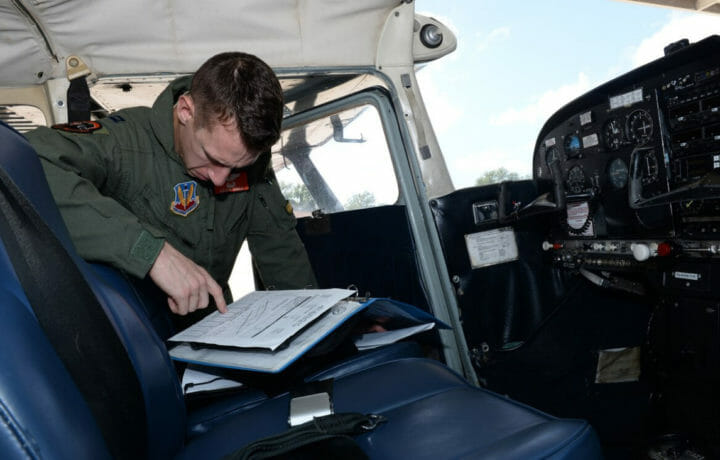Using the GI Bill for flight training seems to cause a lot of confusion. That’s because when it comes to the using GI Bill benefits for this type of training, it is not a one size fits all. In large part, what training is paid (and how much) depends on the type of GI Bill, type of flight training program, and the type of school.
Flight Training Qualifications and Requirements
The GI Bill can be used to train for different commercial flight qualifications including:
- Rotary Wing
- B747-400
- Dual Engine
- Flight Engineer
To begin flight training, a student in most cases must already have a private pilot’s license and has passed the appropriate flight medical certification requirements before starting a commercial pilot training program. There are three levels of medical certification:
- First class for airline transport pilots
- Second class for other commercial carrier pilots
- Third class for private pilots
Types of Flight Training Programs
In general, there are two different types of flight training programs.
1. Non-Degree Vocational Flight Training
If using the Montgomery GI Bill – Active Duty, the cost must be paid upfront by the student and they in turn are reimbursed 60% of the approved flight training fees from the VA. Entitlement use under the MGIB-AD is charged at the rate of one month per $2,150.00 paid out. For example, if 60% of flight training costs end up being $30,000 per year, entitlement use would amount to almost 14 months for that one-year period. At that rate, 36 months of entitlement would be exhausted in 2.5 years.
If using the Post 9/11 GI Bill, it would pay up to $15,075.05 per academic year for flight training. And vocational flight training students using the Post 9/11 GI Bill do not receive the monthly housing allowance (MHA) or book stipend.
2. Degree-Producing Flight Training
However if in a degree-producing flight training program, the rules using the Post 9/11 GI Bill are the same as they are for other types of degree programs and like them, the only variants are the type of school and location.
If at a public school, then the VA pays the school directly up to 100% of tuition and fees at the resident student rate. The student is paid the MHA based on the zip code of the school. They also receive up to $1,000 per year in book stipend money. If attending a private school, then the VA pays up to $26,381.37 per year and they also get MHA and book stipend money.
Regardless of the variables like type of school and location, the amount the VA pays in tuition fees, MHA and book stipend money also depends on the tier percentage of the student. As far as entitlement use, it is the same as with any other degree-type program: one month of entitlement used for each month of school.
Some degree-producing aviation pilot programs include a private pilot’s license option for students that do not already have their private pilot’s license.
Cost of Commercial Pilot Training
Commercial flight training is expensive. For example, at one of the top university flying Aviation degree programs in the U.S. – the University of North Dakota – the cost for 2022/2023 academic year averages out to $1,315.47 per credit or around $31,571.28 per year for a non-resident and typically takes four to five years to complete the program. North Dakota and Minnesota residents pay less at $12,571.44 and $13.874.40 per year, respectively. Fortunately, veterans pay the North Dakota resident rate regardless of their state of residency.
The purpose of the GI Bill is to pay for learning a vocation – something one can use to make a living and support a family. Because most private pilots fly as an avocation – for recreational purposes – the VA generally does not pay for private pilot training.
However as shown, vocational training is covered but generally is not a good use of GI Bill benefits. If you are thinking of learning how to fly commercially and want to maximize the use of your GI Bill benefits, consider enrolling in a degree-producing aviation program.



